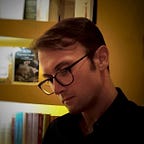In 1888, Toyohiko Kagawa was born in Kobe, Japan. His childhood was marred by suffering and grief. When he got older, Kagawa became a Christian, and dedicated himself to serving the poor in the neighborhood where he lived.
Kagawa then spent two years in the United States, studying at Princeton Theological Seminary. In addition to theology, Kagawa pursued a lifelong interest in science. While at Princeton, he took classes in embryology, genetics, anatomy, and paleontology.
When he returned to Japan, Kagawa continued to serve poor and working-class people. At the same time, he acquired more and more stature as a writer and activist. In 1928, he organized the National Anti-War League, and throughout the 1930s, he spoke out against the rise of militarism and nationalism in Japan. In addition to being a high-profile advocate for peace, Kagawa was also a vocal proponent of women’s suffrage.
Twice Kagawa was arrested as a labor agitator. Once, in 1940, he was arrested for publicly apologizing to China for the Japanese invasion.
As the best available method for bringing about world peace, Kagawa believed in cooperative economics. To help achieve this, Kagawa founded hundreds of schools and cooperatives, including medical cooperatives and cooperative hospitals. Several of the cooperatives Kagawa founded still exist today.
In 1971, my father, Frederick Hart, paid homage to the Japanese activist by recreating his likeness in sculpture. A stone version of this sculpture was later placed in a niche at Washington National Cathedral, where it can still be seen to this day.
